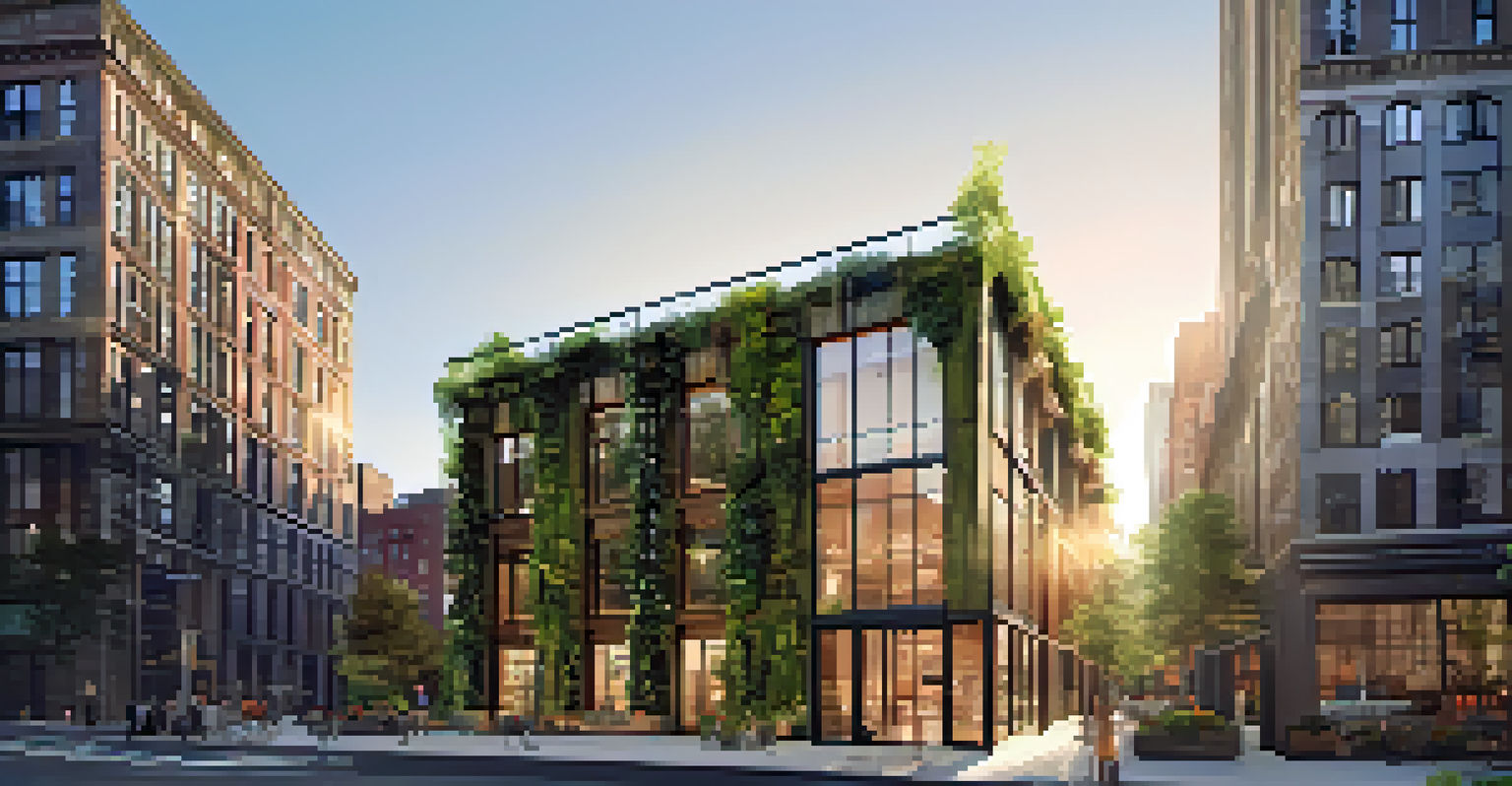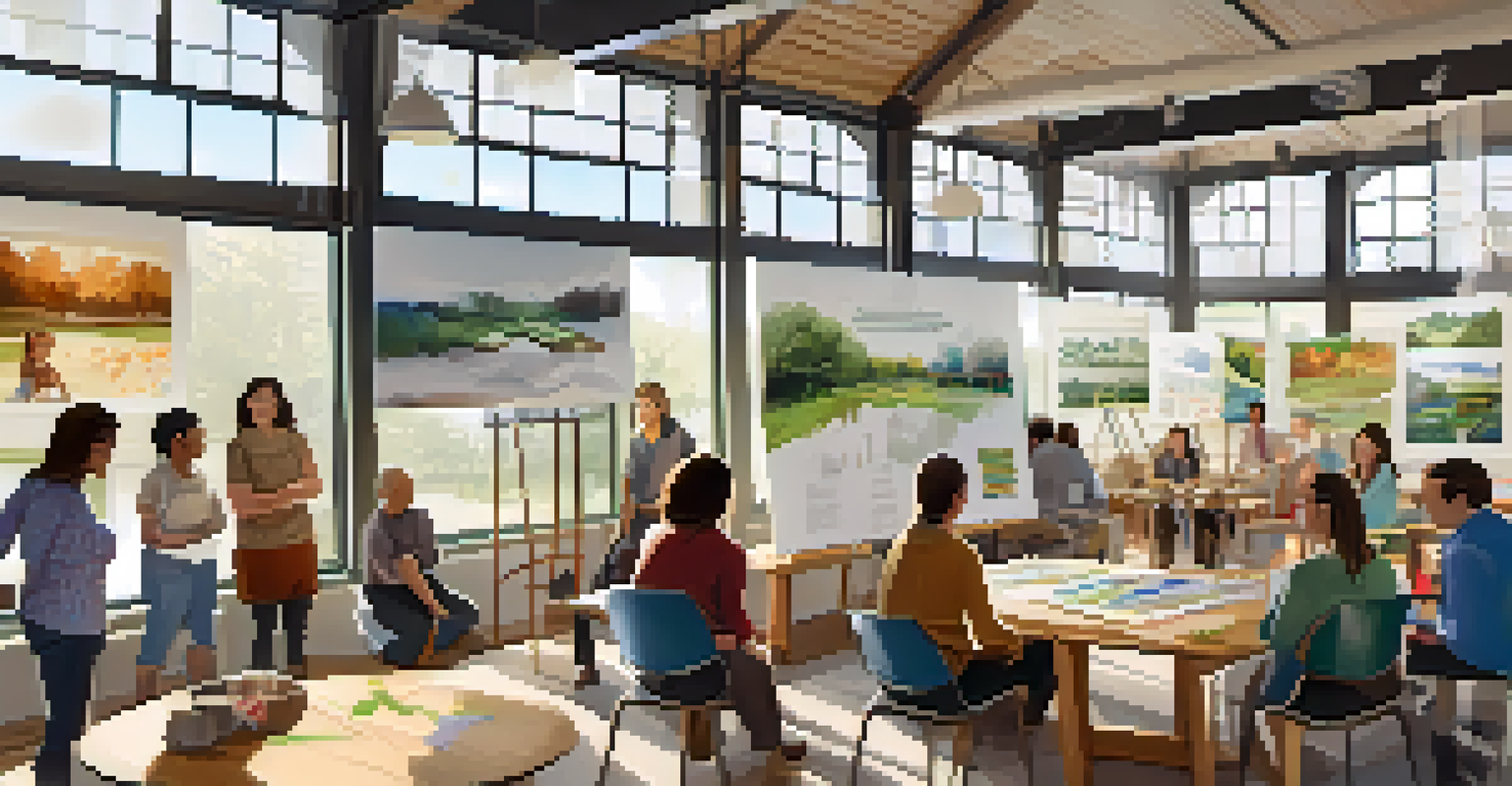Green Building Practices: NYC's Eco-Friendly Architecture

Understanding Green Building Practices in NYC
Green building practices focus on environmentally responsible and resource-efficient designs. In New York City, these practices are gaining traction as architects and developers aim to minimize their environmental footprint. By integrating sustainable materials and technologies, they create spaces that are not only functional but also beneficial to the planet.
Sustainability is not a destination, it's a journey. It's about making better choices today for a better tomorrow.
Sustainability in architecture means considering the entire lifecycle of a building, from design to demolition. This approach helps reduce waste, energy consumption, and pollution, making urban living more sustainable. The benefits extend beyond the environment, contributing to healthier living spaces for residents.
In NYC, green building certifications like LEED (Leadership in Energy and Environmental Design) play a crucial role in promoting these practices. Buildings that achieve LEED certification demonstrate a commitment to sustainability, attracting environmentally conscious tenants and investors.
The Role of Renewable Energy in NYC's Architecture
Renewable energy sources, such as solar and wind power, are pivotal in NYC's green architecture. Buildings are increasingly incorporating solar panels and energy-efficient systems to harness these renewable resources. This shift not only reduces reliance on fossil fuels but also lowers energy bills for building owners and tenants.

For instance, the Edge, a skyscraper in Hudson Yards, utilizes solar energy to power common areas, showcasing how renewable energy can be integrated into urban designs. Such initiatives send a strong message about the importance of clean energy in combating climate change.
Green Building Practices Thrive in NYC
Architects in NYC are adopting environmentally responsible designs, integrating sustainable materials and technologies to minimize their ecological footprint.
Moreover, the use of renewable energy enhances the overall resilience of buildings, making them more adaptable to future environmental challenges. This foresight is essential in a city that faces rising sea levels and extreme weather events.
Eco-Friendly Materials for Sustainable Construction
One of the cornerstones of green building practices is the use of eco-friendly materials. In NYC, architects are increasingly selecting sustainably sourced materials that minimize environmental impact. Options like reclaimed wood and recycled steel not only reduce waste but also add unique character to buildings.
The greatest threat to our planet is the belief that someone else will save it.
Additionally, innovative materials such as bamboo and rammed earth are gaining popularity for their sustainability and aesthetic appeal. These materials are often more durable than conventional options, offering long-term benefits for both the environment and the building's occupants.
By prioritizing these eco-friendly materials, NYC's architects are paving the way for a construction culture that respects nature. This shift encourages other cities to adopt similar practices, creating a ripple effect in sustainable architecture.
Water Conservation Strategies in Urban Building
Water conservation is a critical component of green building practices in NYC. As urban areas face increasing water scarcity, architects are implementing strategies to reduce water usage in buildings. Techniques like rainwater harvesting and greywater recycling are becoming standard in new developments.
For example, the Bullitt Center in Seattle incorporates a rainwater collection system that meets 100% of its water needs. This innovative approach not only conserves water but also ensures that buildings can thrive independently of municipal water supplies.
Renewable Energy Powers Urban Designs
Buildings are increasingly utilizing renewable energy sources, like solar power, to enhance efficiency and reduce reliance on fossil fuels.
By adopting these water conservation strategies, NYC is taking significant steps toward sustainable urban living. These practices not only benefit the environment but also promote responsible water usage among residents.
Indoor Air Quality and Sustainable Living Spaces
Indoor air quality is paramount in green building practices, especially in densely populated cities like NYC. Poor air quality can lead to health issues, making it essential for architects to design spaces that enhance ventilation and use non-toxic materials. This focus on health and well-being is a key aspect of sustainable architecture.
Many buildings now incorporate features like green roofs and living walls, which not only beautify spaces but also improve air quality. These elements help filter pollutants and provide a natural habitat for urban wildlife, enhancing the overall ecosystem.
By prioritizing indoor air quality, NYC's green buildings contribute to healthier living conditions for residents. This holistic approach to design ensures that sustainability extends beyond environmental benefits to include the well-being of inhabitants.
Community Involvement in Sustainable Design
Community involvement is vital in shaping NYC's eco-friendly architecture. Engaging local residents in the design process ensures that projects reflect their needs and values. This collaborative approach fosters a sense of ownership and pride in sustainable initiatives.
For instance, the New York City Department of Environmental Protection often holds workshops to educate the community about sustainable practices. Such initiatives empower residents to advocate for green developments that enhance their neighborhoods.
Community Engagement Shapes Sustainability
Involving local residents in the design process fosters ownership and ensures that sustainable projects meet community needs and values.
By integrating community feedback, NYC's green building practices not only meet environmental goals but also strengthen social ties. This synergy between sustainability and community engagement is essential for creating resilient urban environments.
The Future of Green Building in New York City
The future of green building in NYC looks promising, with ongoing advancements in technology and design. As more developers recognize the economic benefits of sustainable practices, we can expect to see a surge in eco-friendly projects. This shift will likely lead to a more resilient urban landscape that prioritizes environmental stewardship.
Innovations in smart building technology are also playing a significant role in this transformation. From energy monitoring systems to automated climate controls, these advancements help optimize resource usage, making buildings more efficient and sustainable.

As NYC continues to lead the way in sustainable architecture, it sets an example for cities worldwide. The commitment to green building practices not only addresses current environmental challenges but also lays the groundwork for a more sustainable future.